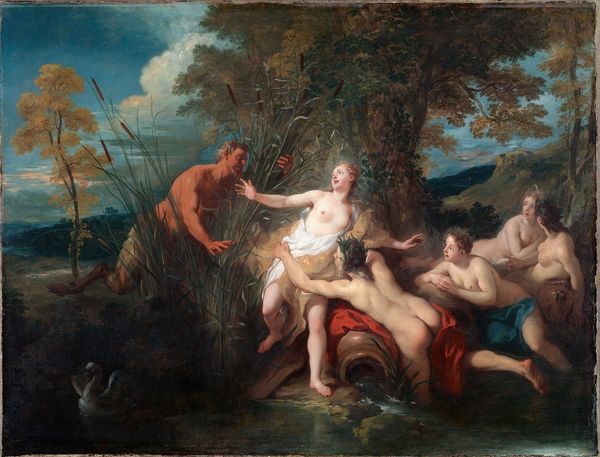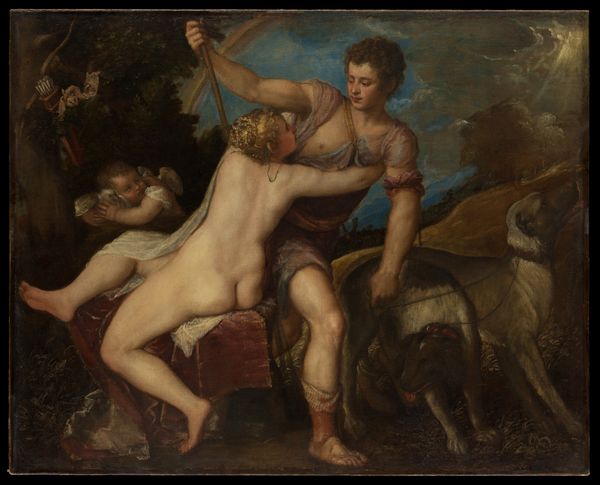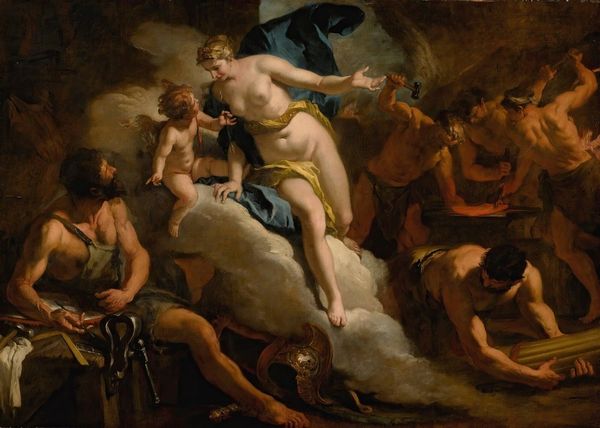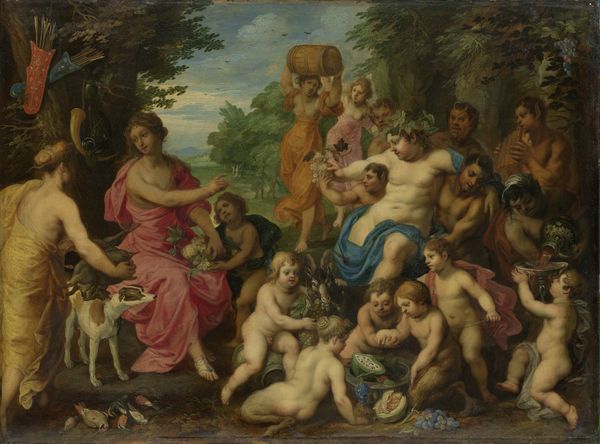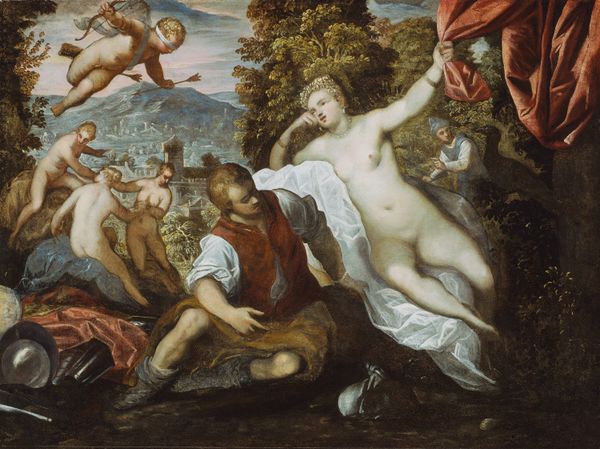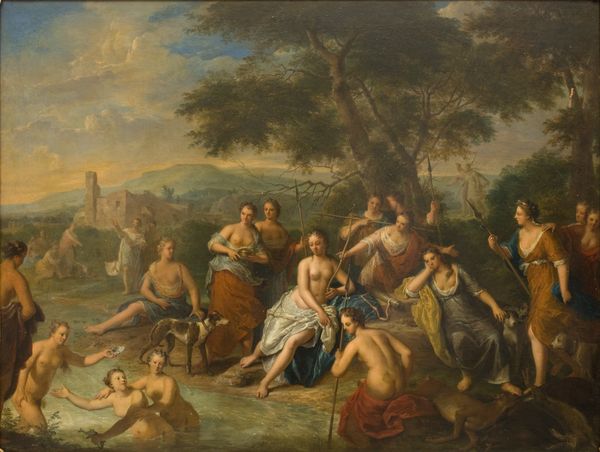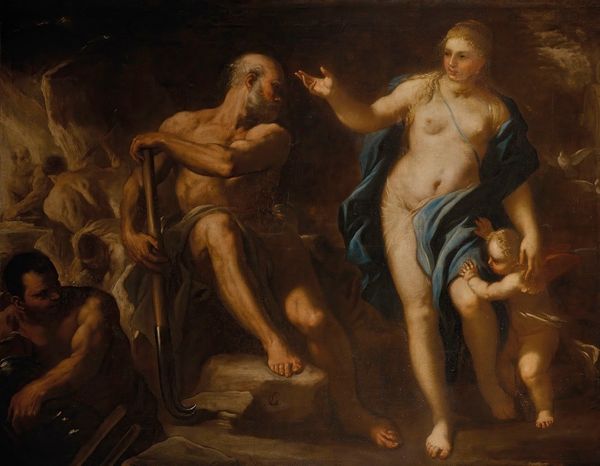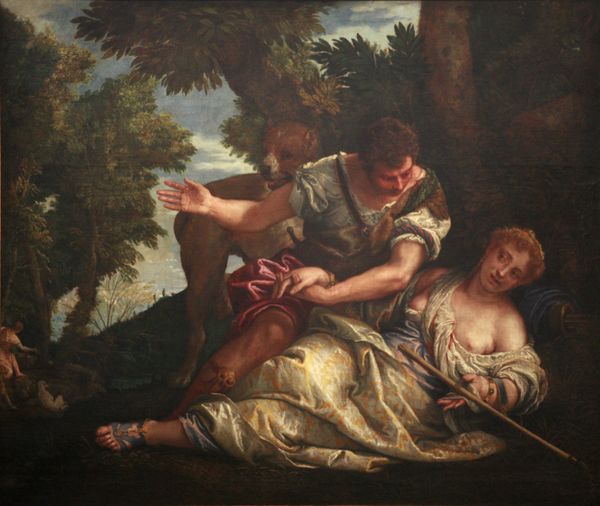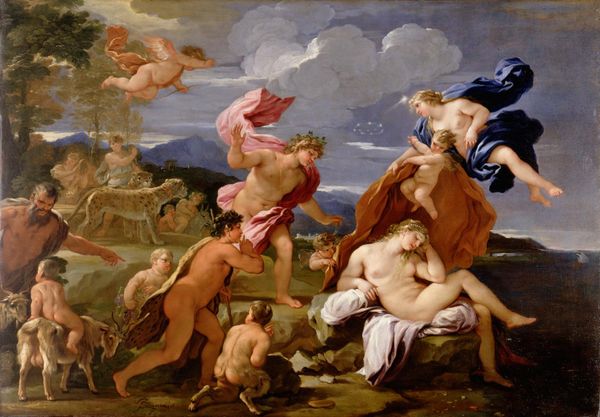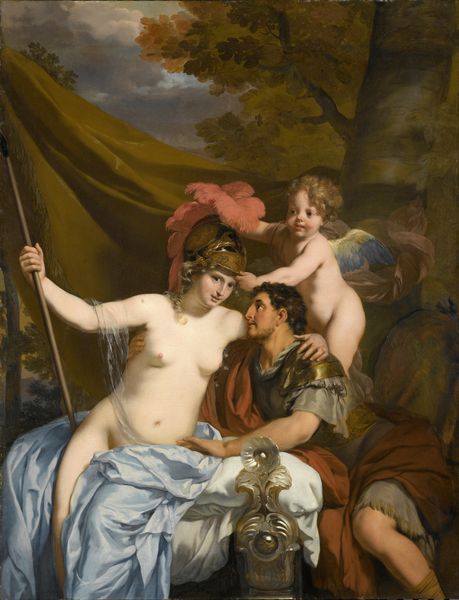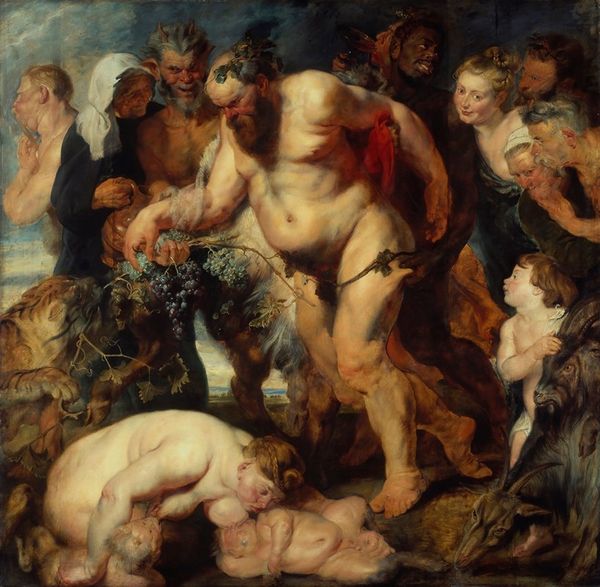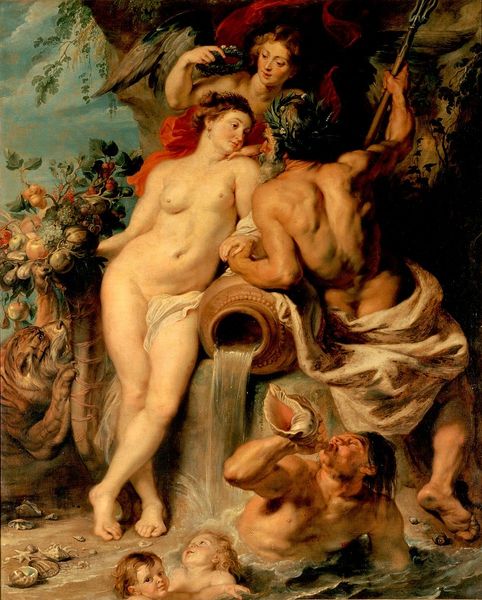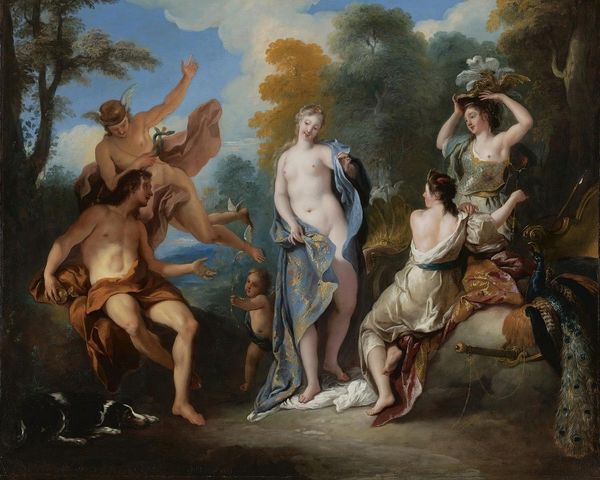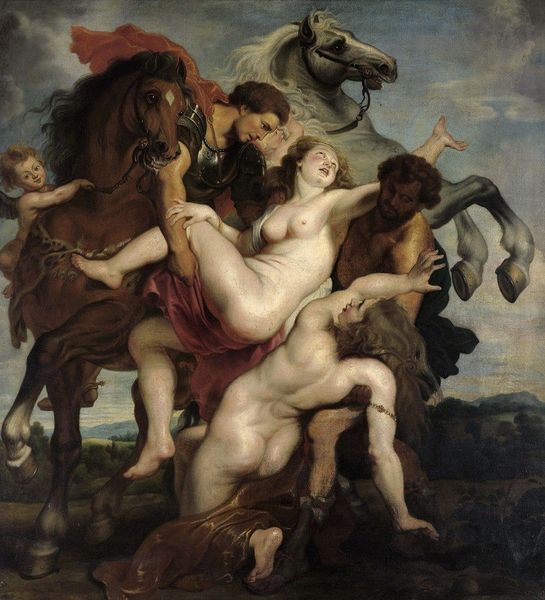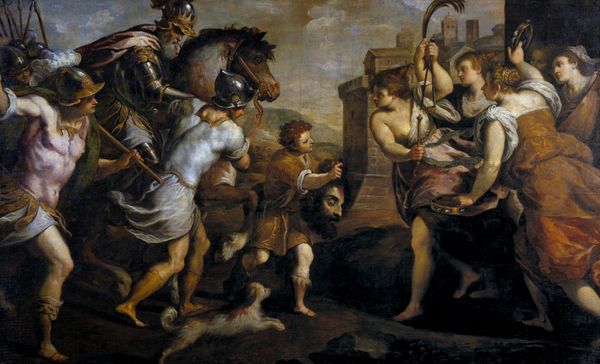
oil-paint
#
allegory
#
baroque
#
oil-paint
#
figuration
#
oil painting
#
genre-painting
Copyright: Public domain
Curator: Honthorst's "Triumph of Silenus", created around 1630 using oil paint, pulls us into a riotous scene. My first impression is how wonderfully disorderly it is—figures jostling, drinking, completely abandoning themselves. What's your take? Editor: Indeed, an exuberant revelry! The motif of intoxication certainly speaks volumes here. Beyond just simple merriment, I perceive the symbol of uninhibited sensuality, with Silenus representing that tipping point into complete oblivion and ecstasy. Curator: Precisely! Honthorst situates this in a lineage of thinking about the body and pleasure. Given the period, I would like to examine the political undercurrents—is this bacchanal an act of liberation or of something more complex like subversion of moral authority? Editor: Or consider the symbolic nature of the goat, being ridden by a cherubic figure near the painting’s lower edge. Throughout history, the goat often appears as a symbol of unbridled desire and irrationality, adding layers to the painting’s psychological symbolism. Curator: Which then leads us to questions of agency and power dynamics within the scene. The placement and expressions, like those of the woman at the right, invite consideration of how this painter frames notions of complicity and perhaps even resistance. Editor: Honthorst masterfully employs chiaroscuro—the stark contrast between light and shadow, that was very prevalent during the baroque period—intensifying the sense of drama. What kind of memory or history might it invoke for different viewers? Curator: Through my eyes, this prompts us to scrutinize which stories are allowed visibility and at whose expense. It also speaks volumes of societal shifts occurring during its historical context. This pushes for contemporary reflection, especially regarding power dynamics of that period. Editor: Well, for me it brings to the fore archetypes of desire and abandon; perhaps each brushstroke becomes part of our collective consciousness relating to this revelry, urging a dive deeper beyond surface narratives—one that connects human psyche through a single moment captured on canvas. Curator: An intersection of historical commentary and psycho-social expression? Fascinating food for thought. Editor: Absolutely, seeing this Honthorst is truly a potent emblem to experience.
Comments
No comments
Be the first to comment and join the conversation on the ultimate creative platform.
